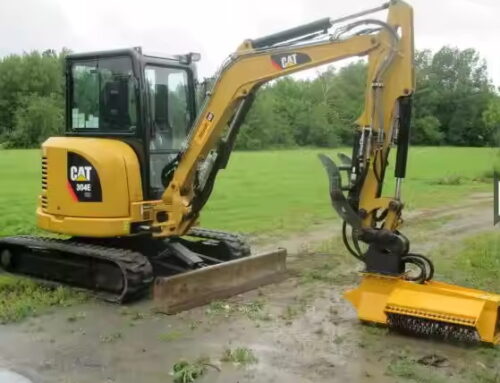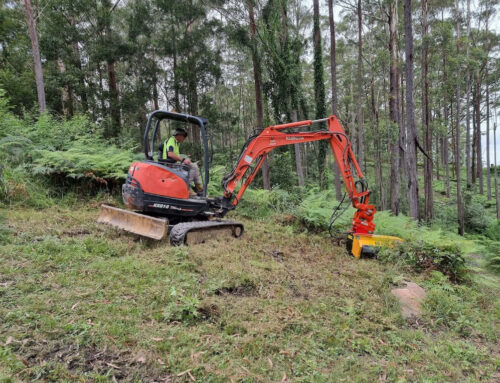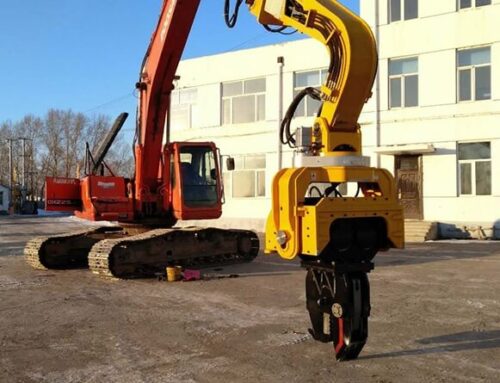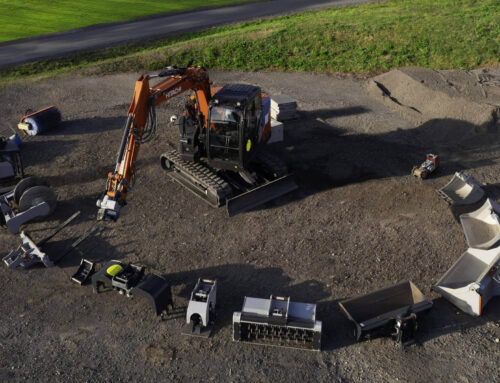In the dynamic world of construction, efficiency and versatility are paramount. The excavator hydraulic plate compactors merges as a pivotal tool, designed to optimize workflow and enhance project outcomes. This blog delves into the numerous advantages of using an excavator hydraulic plate compactor, compares it with other similar products, and highlights its suitability for various engineering projects.
Introduction to Excavator Hydraulic Plate Compactors
An excavator hydraulic plate compactor is a heavy-duty attachment designed to fit onto the arm of an excavator. Utilizing the hydraulic power of the excavator, it delivers powerful vibratory compaction capable of efficiently compacting soil, gravel, and other materials. This tool is vital in tasks requiring solid base preparation for foundations, roads, and trenches.
Advantages of Excavator Hydraulic Plate Compactors
- Enhanced Efficiency: Hydraulic plate compactors allow for quick compaction of large areas, significantly reducing the time and labor required compared to manual methods.
- Deep Compaction: Capable of achieving greater compaction depths with consistent force, ensuring stability and durability in the compacted area.
- Reduced Labor Cost: By attaching directly to an excavator, these compactors eliminate the need for additional compaction equipment, thus saving on labor and equipment rental costs.
- Precision and Versatility: Designed to work in confined spaces where traditional rollers cannot reach, they provide precise compaction around pillars, walls, and other structures.
- Safety: Operators remain inside the excavator cabin, reducing the risk associated with traditional walk-behind or ride-on compactors.
- Durability: Built to withstand harsh working conditions, hydraulic plate compactors offer a long service life with minimal maintenance requirements.
Comparison with Other Compaction Equipment
When considering compaction equipment, it’s essential to compare hydraulic plate compactors with other options like rammers, vibratory plate compactors, and smooth drum rollers to understand their unique benefits and limitations.
- Rammers: Ideal for compacting cohesive soils in narrow spaces, rammers offer excellent maneuverability but have a smaller coverage area and lower efficiency on large sites.
- Vibratory Plate Compactors: Suitable for a variety of soil types and interlocking paving stones, these are lighter and easier to maneuver than hydraulic compactors but less effective on very large or deep compaction tasks.
- Smooth Drum Rollers: Best for compacting large, flat areas like roads and foundations. While they cover larger areas quickly, they cannot reach confined spaces and require separate transportation to the site.
The excavator hydraulic plate compactor holds a distinct advantage in versatility and efficiency, particularly in large-scale or specialized construction scenarios where other compactors falter.
Ideal Engineering Projects for Hydraulic Plate Compactors
Hydraulic plate compactors excel in a variety of engineering projects due to their powerful compaction ability and adaptability. Here are some projects where they are particularly effective:
- Road Construction: For creating stable and level bases, especially useful in shoulder compaction along roadsides.
- Foundations and Structural Bases: Ensuring tightly packed soil that can support large structural loads for buildings and other infrastructures.
- Trench Backfill: Compacting backfill in trenches for pipelines or cables, significantly increasing the speed and efficacy of the process.
- Slope Compaction: Providing necessary compaction on slopes and embankments to prevent soil erosion and slippage.
- Landscaping and Site Preparation: Preparing sites for landscaping requires uniform compaction to prevent settling and unevenness.
Economic and Environmental Considerations
The use of excavator hydraulic plate compactors also brings significant economic and environmental benefits, making them a sustainable choice in modern construction:
- Reduced Carbon Footprint: By maximizing efficiency and minimizing the use of multiple machines, hydraulic plate compactors help reduce fuel consumption and emissions. This is particularly important in urban construction projects where environmental regulations are stringent.
- Cost-Effectiveness: The initial investment in a hydraulic plate compactor can be offset by the reduced need for multiple pieces of equipment and the corresponding decrease in operational and maintenance costs. This aspect is crucial for companies aiming to maintain competitive pricing while enhancing service delivery.
- Material Efficiency: Proper compaction ensures that materials are used optimally, reducing waste and the need for additional materials to rework areas that may settle or shift if not adequately compacted.
Challenges and Limitations
While the advantages are substantial, it’s important to acknowledge the challenges and limitations associated with the use of hydraulic plate compactors:
- Initial Investment: The upfront cost of a hydraulic plate compactor attachment can be high, which might be a barrier for small to medium-sized enterprises.
- Dependency on Excavator Availability: The effectiveness of the compactor is dependent on the availability and condition of the excavator. In situations where the excavator is needed for other tasks, this can limit the usage of the compactor attachment.
- Training and Operation: Operators must be adequately trained not only in the use of the excavator but also in the specific operation of the hydraulic compactor attachment. This requirement can add to the operational overhead in terms of both time and training costs.
Market Trends and Future Outlook
The global market for construction equipment continues to evolve, with an increasing focus on attachments that enhance versatility and productivity. The excavator hydraulic plate compactor is well-positioned within this trend, driven by technological advancements that improve performance and user-friendliness. As urbanization progresses and infrastructure demands grow, the need for efficient, versatile, and environmentally friendly construction methods will drive further innovations in compactor technology.
Future enhancements might include:
Integrated Sensors: To provide real-time feedback on soil compaction quality, helping operators achieve optimal density levels without over or under-compaction.
Automated Control Systems: Advances in automation could allow for preset compaction requirements based on the soil type and project specifications, reducing operator workload and enhancing precision.
Case Studies
Real-world applications underscore the effectiveness of excavator hydraulic plate compactors:
Highway Expansion Project in Texas: A major highway expansion utilized hydraulic plate compactors to quickly prepare the foundation for several overpasses. The project benefited from reduced compaction times and lower labor costs, contributing to its completion ahead of schedule.
Urban Pipeline Installation in Amsterdam: Contractors used compactors to efficiently backfill trenches in a congested urban environment, minimizing disruption and avoiding damage to nearby structures thanks to the precise control offered by the excavator attachment.
Conclusion
Excavator hydraulic plate compactors represent a transformative development in construction equipment technology. Their ability to deliver powerful, efficient, and precise compaction makes them indispensable in modern construction, particularly for projects that demand high efficiency and adherence to strict environmental standards. As the construction industry continues to seek innovative solutions to meet growing global demands, the role of hydraulic plate compactors is set to become increasingly central, defining the future of compaction in construction projects worldwide.
The excavator hydraulic plate compactor represents a significant advancement in compaction technology. Offering a blend of efficiency, safety, and versatility, it stands out from traditional compaction methods, making it a preferred choice for modern construction projects. As the industry continues to evolve, the adoption of such innovative tools will undoubtedly become more widespread, driven by their considerable benefits and the continuous push for improved construction practices.
By integrating hydraulic plate compactors into their operations, construction companies can achieve faster, safer, and more cost-effective compaction, propelling their projects towards timely and successful completions. Whether it’s road construction, foundation work, or landscape preparation, the hydraulic plate compactor is an indispensable tool that enhances both productivity and results in the construction industry.







Leave A Comment